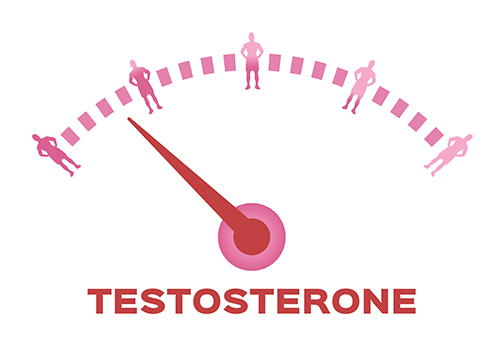Table of Contents
Background
 Testosterone is important for a multitude of functions. It is critical to bone health, aids in production of red blood cells (our oxygen carrying cells), impacts our mood and energy level, and protects against mental fogginess. Around the age of 40, our testosterone levels will decrease by approximately 1-2% per year.
Testosterone is important for a multitude of functions. It is critical to bone health, aids in production of red blood cells (our oxygen carrying cells), impacts our mood and energy level, and protects against mental fogginess. Around the age of 40, our testosterone levels will decrease by approximately 1-2% per year.
Symptoms
Symptoms of low testosterone can include any of the following:
- Low sex drive
- Fatigue / Low Energy
- Erectile dysfunction
- Decreased muscle mass
- Depression
- Weight gain
- Poor focus / Mental fogginess
Causes
As mentioned previously, Testosterone levels peak during early adulthood and begin to decline starting around the age of 40. Low testosterone can be secondary to age related changes, decreased production of the hormone by the testicles, or due to problems with the pituitary gland (small gland in the brain that controls the production of testosterone). It will be important for your urologist to determine the cause of your low testosterone so that your treatment can be optimized.
How to Diagnose
Your urologist will perform a physical exam, review your symptoms, and obtain a blood test to check your hormone levels. If your testosterone levels are below a certain threshold, a subsequent additional and/or confirmatory blood test may be done prior to any recommendation for treatment. It is important to note that, because of the cyclic nature in which our bodies produce testosterone, all of your labs should be drawn prior to 10 o’clock in the morning for maximum accuracy.
Treatment Options
In most cases, men need to have low levels of testosterone in their blood, in addition to several symptoms of low Testosterone, in order to qualify for testosterone therapy. Testosterone therapy is not right for every patient and you should have a discussion with your urologist prior to initiating treatment. Sometimes your urologist can identify the source of low testosterone– such as weight gain or certain medications –which might be addressed prior to resorting to testosterone therapy.
 If you and your doctor feel that testosterone replacement therapy is the best choice for you, there are a variety of delivery methods that can be considered:
If you and your doctor feel that testosterone replacement therapy is the best choice for you, there are a variety of delivery methods that can be considered:
- Testosterone Gels / Creams – applied once every 24 hours directly onto the skin of both upper arms, shoulders or thighs. It is important to thoroughly wash your hands after applying testosterone to prevent exposing others with whom you come in contact.
- Natesto (Inhalable Testosterone) – This gel is administered by nasal inhalation (after blowing your nose to optimize absorption). Generally, the dosage is to inhale one pump via each nostril three times daily.
- Pellets – Implanted under the skin of the buttocks during an office visit, pellets slowly release testosterone and should be replaced every three months.
- Injections – Patients are taught self-injections of Testosterone which they do at home every seven to 14 days.
- Testosterone Cypionate: 200mg/ml intramuscular injection. Injections can be done in the clinic or you can be taught by our nurse how to self-administer.
- Testosterone Enanthate: 200mg/ml
- Aveed: Long acting Testosterone. 750mg in 3cc is injected into the muscle. Injections are performed in the clinic upon initiation, one month later, and then every 10 weeks.

